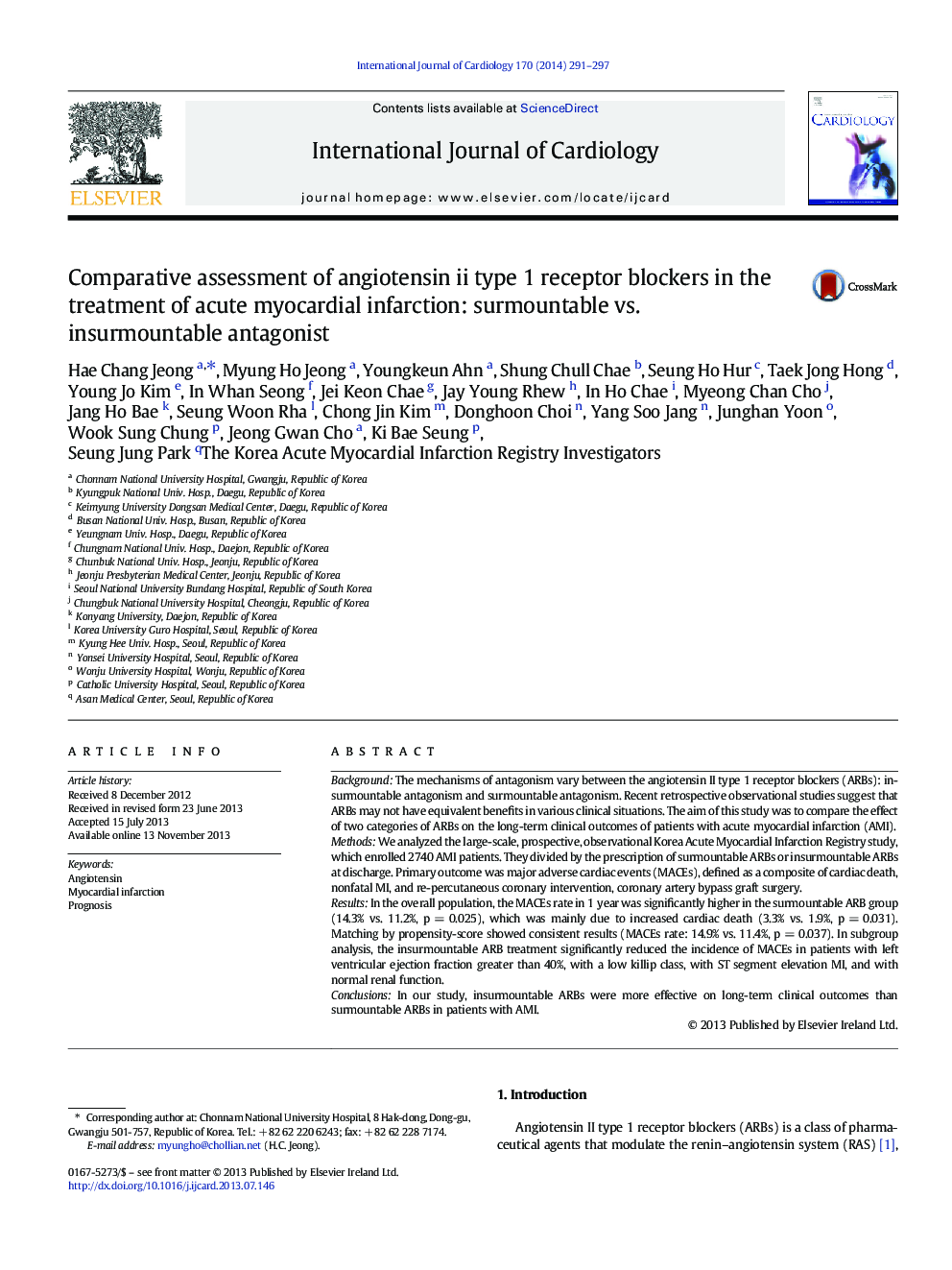| Article ID | Journal | Published Year | Pages | File Type |
|---|---|---|---|---|
| 5973034 | International Journal of Cardiology | 2014 | 7 Pages |
BackgroundThe mechanisms of antagonism vary between the angiotensin II type 1 receptor blockers (ARBs): insurmountable antagonism and surmountable antagonism. Recent retrospective observational studies suggest that ARBs may not have equivalent benefits in various clinical situations. The aim of this study was to compare the effect of two categories of ARBs on the long-term clinical outcomes of patients with acute myocardial infarction (AMI).MethodsWe analyzed the large-scale, prospective, observational Korea Acute Myocardial Infarction Registry study, which enrolled 2740 AMI patients. They divided by the prescription of surmountable ARBs or insurmountable ARBs at discharge. Primary outcome was major adverse cardiac events (MACEs), defined as a composite of cardiac death, nonfatal MI, and re-percutaneous coronary intervention, coronary artery bypass graft surgery.ResultsIn the overall population, the MACEs rate in 1 year was significantly higher in the surmountable ARB group (14.3% vs. 11.2%, p = 0.025), which was mainly due to increased cardiac death (3.3% vs. 1.9%, p = 0.031). Matching by propensity-score showed consistent results (MACEs rate: 14.9% vs. 11.4%, p = 0.037). In subgroup analysis, the insurmountable ARB treatment significantly reduced the incidence of MACEs in patients with left ventricular ejection fraction greater than 40%, with a low killip class, with ST segment elevation MI, and with normal renal function.ConclusionsIn our study, insurmountable ARBs were more effective on long-term clinical outcomes than surmountable ARBs in patients with AMI.
